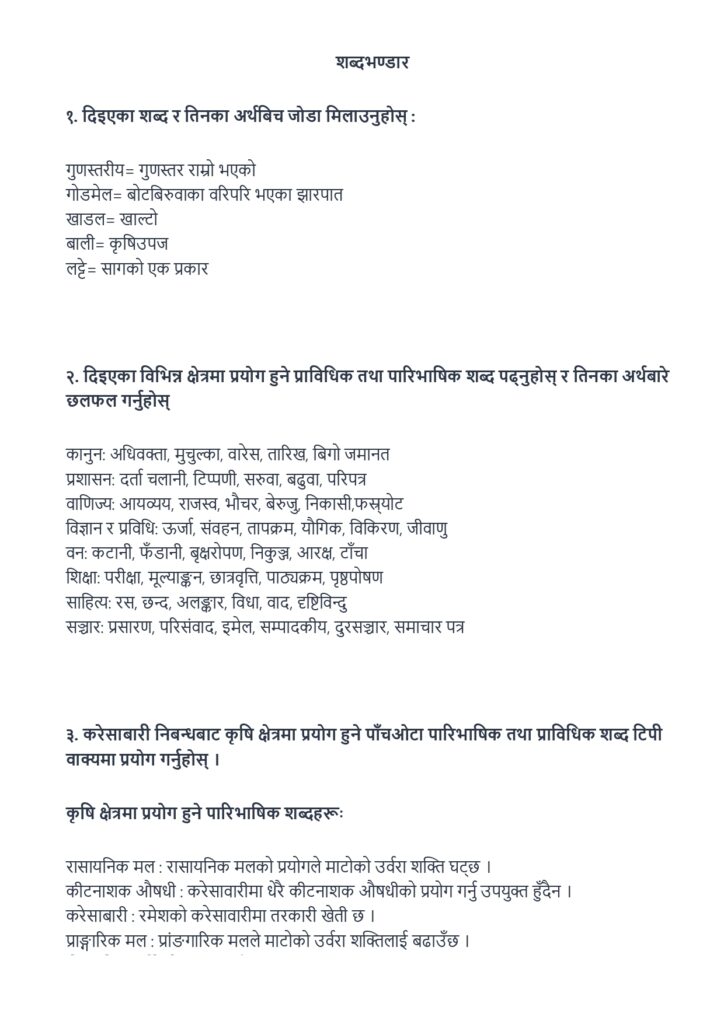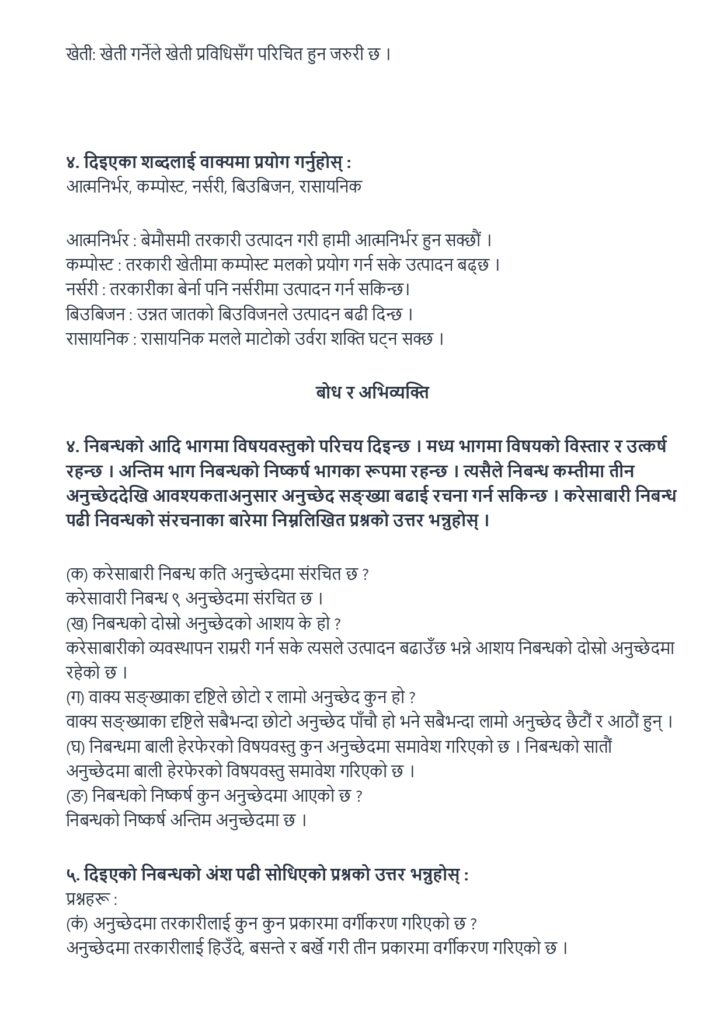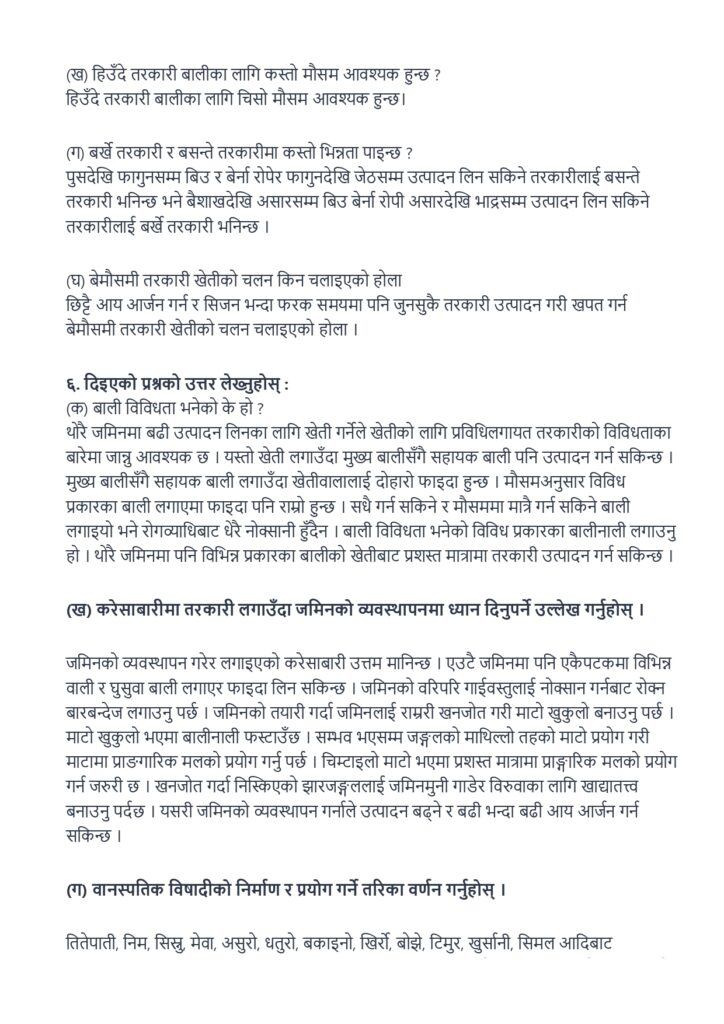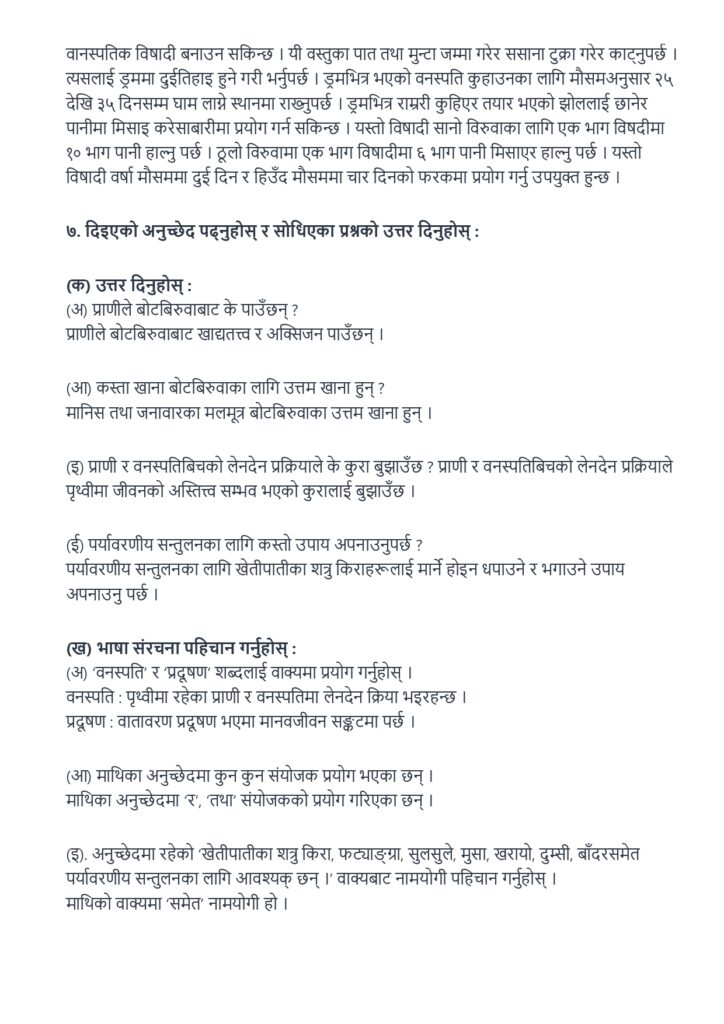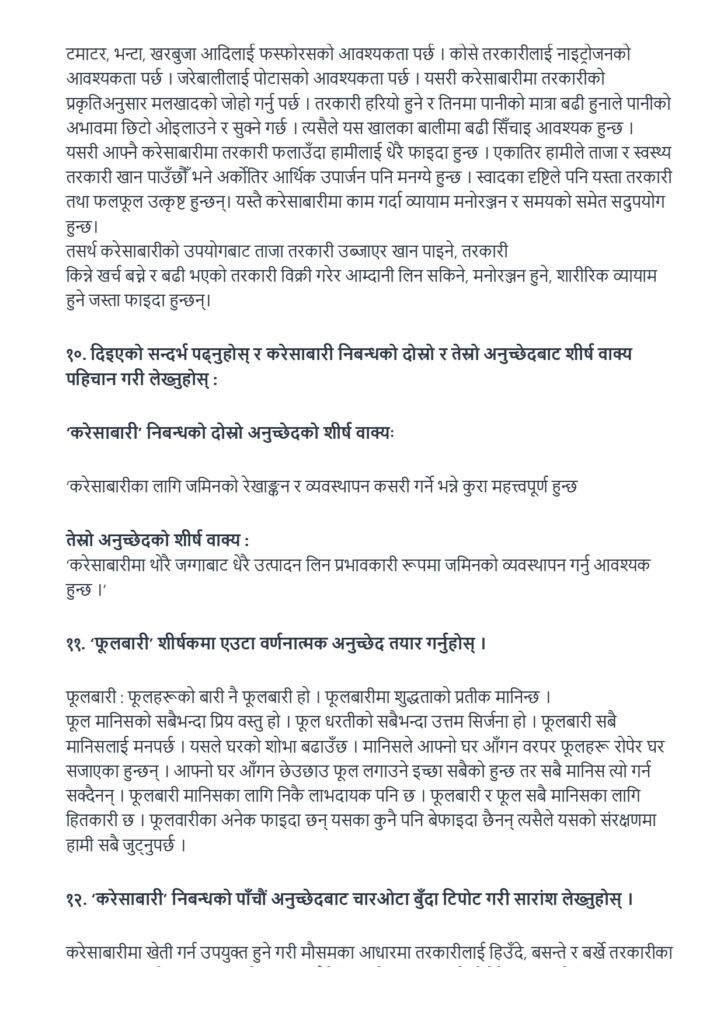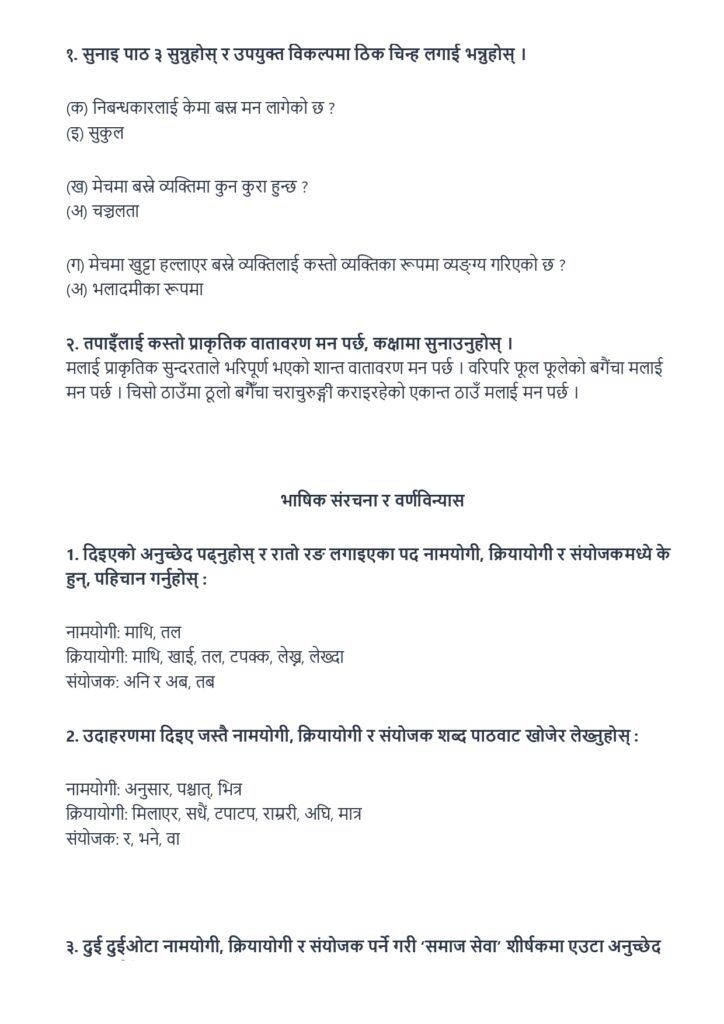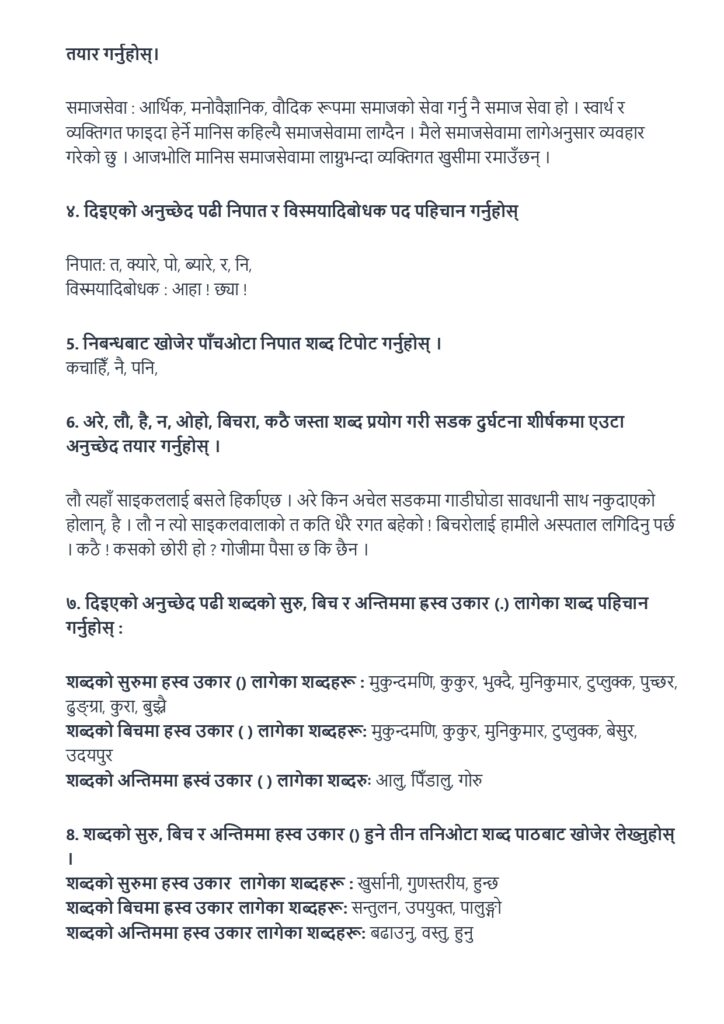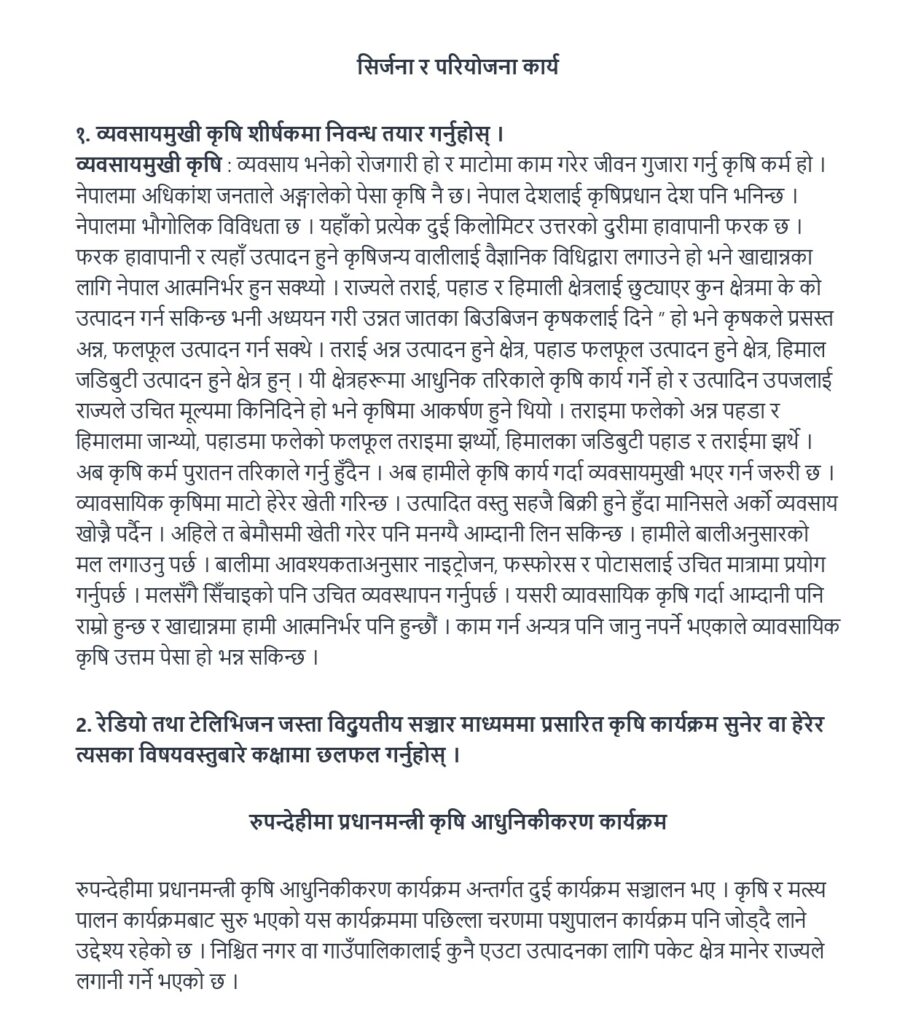In this post, you’ll find Class 9 Nepali Chapter 3 Karesabari Excercise. We’ve included all questions and answers and their explanation. You can also find Vyakaran Excercise.
If you find this Class 9 Nepali Chapter 3 Excercise helpful, share this with your friends.
Karesabari Summary
“Karesabari” is an essay included in the Class 9 Nepali syllabus, and its English translation is “Karesabari.” The essay revolves around a group of students who visit Badri’s Agro farm, gaining insights into the potential of agriculture as a livelihood in Nepal.
Commencing with the prefix ‘eco,’ the essay delves into the interconnectedness of humans, nature, and the environment, emphasizing the shared home of Earth. It highlights the dependence on five essential elements: water, land, air, sky, and light.
The essay portrays Nepal’s environment and ecosystem as a metaphorical five-story tower, delineating regions from the Terai at the ground floor to the snow-capped peaks on the roof, with Bardalike province situated on the northern side.
Nepal’s natural diversity attracts a significant number of global tourists, leading to a discussion on the significance of eco-tourism. Eco-tourism, focusing on environmental, natural, and cultural attractions, aims to maintain a clean and undisturbed environment while supporting nature conservation and benefiting local communities.
Despite current statistics indicating a considerable influx of foreign tourists, the Government of Nepal aspires to increase these numbers responsibly. The essay underscores the importance of responsible tourism practices, emphasizing the shared responsibility of hosts and guests. It advocates for eco-friendly tourism to preserve the environment and uphold the principles of eco-tourism.
Karesabari: Class 9 Nepali Chapter 3 Excercise
